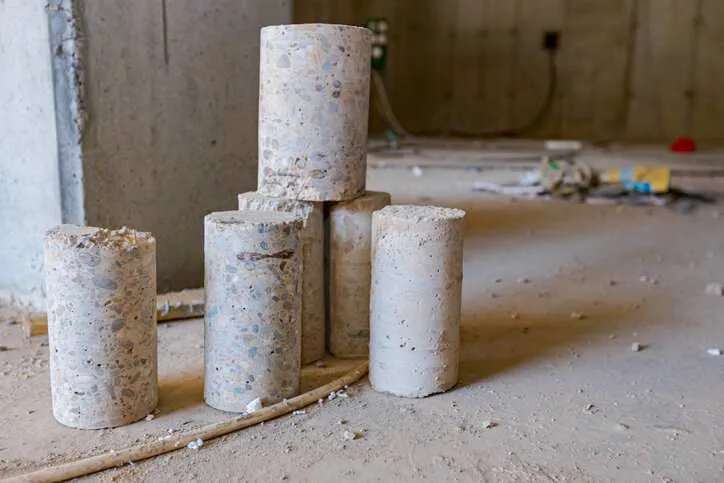ASTM C31/C31M-25a: Making Concrete Test Specimens

Concrete test specimens (concrete cylinders, beams, or cubes) are used in various construction projects; they help to determine the quality and strength of concrete used on the project. By assessing their compressive strength, workability, and durability, concrete test specimens help engineers assure that concrete structures like buildings and bridges are structurally sound. ASTM C31/C31M-25a: Standard Practice for Making and Curing Concrete Test Specimens in the Field provides standardized requirements for making and curing test specimens of fresh concrete in the field.
How to Make Concrete Test Specimens
Making concrete test specimens includes the following steps:
- Obtain a representative concrete sample
- Mold the sample into cylinders or cubes using appropriate molds
- Cure the samples according to ASTM C31 standards, assuring proper handling and storage
What Is ASTM C31/C31M-25a?
ASTM C31/C31M-25a covers procedures for making and curing cylinder and beam specimens from representative samples of fresh concrete for a construction project. This standard provides requirements for transporting test specimens to the laboratory as well as for curing test specimens in the laboratory. Depending on their purpose, test specimens are either standard cured or field-cured.
Uses of Standard-Cured Test Specimens
ASTM C31/C31M-25a establishes that the uses of the test results of standard-cured test specimens include the following purposes:
- Acceptance testing for specified concrete strength
- Checking adequacy of mixture proportions for concrete strength
- Quality control
Uses of Field-Cured Test Specimens
ASTM C31/C31M-25a details the uses of test results of field-cured test specimens include the following purposes:
- Estimation of the in-place concrete strength
- Comparison with test results of standard-cured specimens or with test results from various in-place test methods
- Adequacy of curing and protection of concrete in the structure
- Form or shoring removal time requirements
- Post-tensioning
The practice covered in ASTM C31/C31M-25a is not intended for making specimens from concrete not having measurable slump or requiring other sizes or shapes of specimens.
Difference between Standard-Cured and Field-Cured Specimens
Standard-cured specimens are concrete test samples, typically cylinders or beams, that are molded and cured under controlled conditions. The key to making standard-cured test specimens is that they are produced and cured in a defined, repeatable way. Standard-cured test specimens are typically molded in the field, initially stored onsite in a controlled environment, then relocated to a lab where they continue to cure until reaching a specified age at which the strength is determined via destructive testing.
While standard-cured specimens are cured under controlled laboratory conditions to assure consistent result for quality control and concrete acceptance, field-cured specimens are cured on-site to mimic real-word conditions. As such, field-cured specimens are used for determining formwork removal or if a structure is ready for service. The objective when curing field-cured cylinders is to reproduce the effects of the environment as closely as possible such that the strength of the test specimens closely approximates the actual strength of the concrete placement at any particular moment.
ASTM C31/C31M-25a: Standard Practice for Making and Curing Concrete Test Specimens in the Field is available on the ANSI Webstore.






